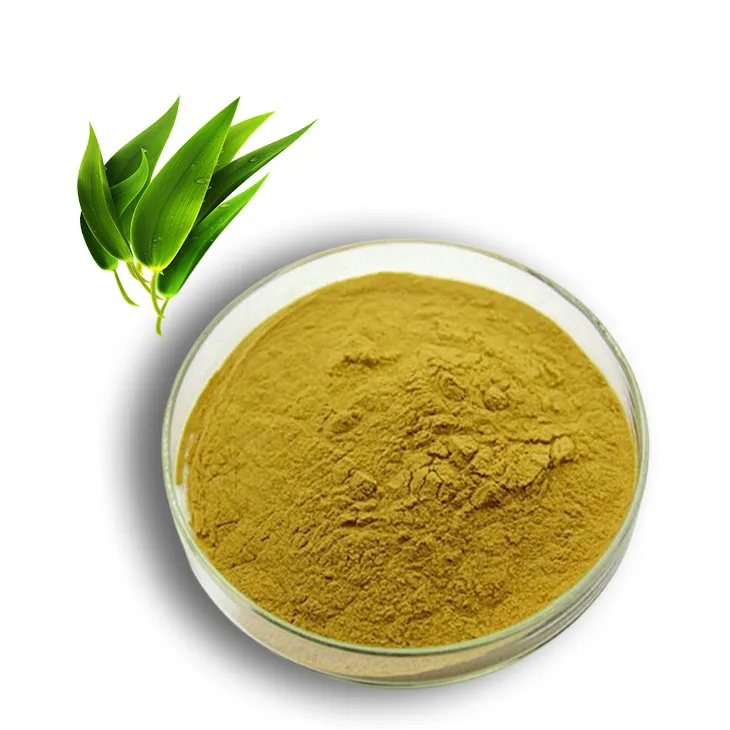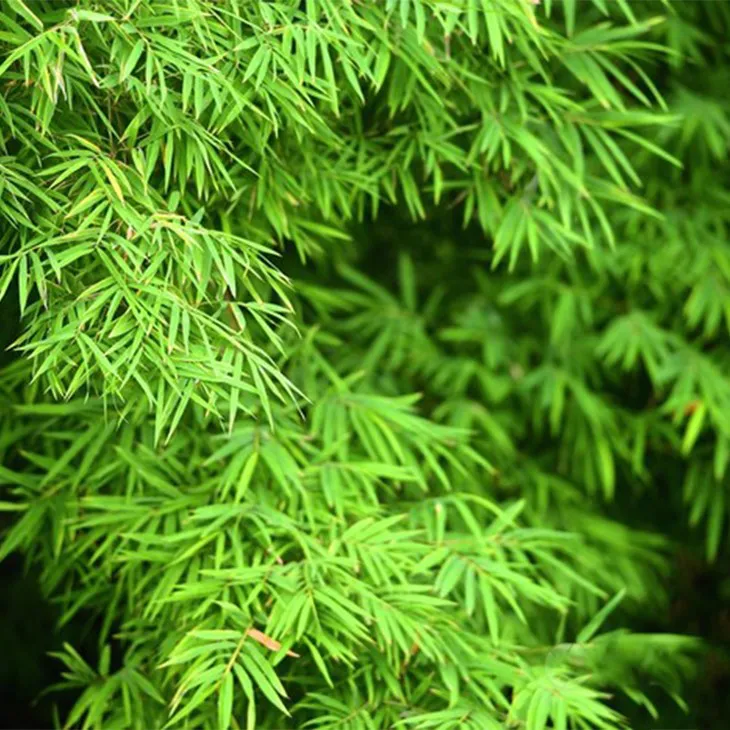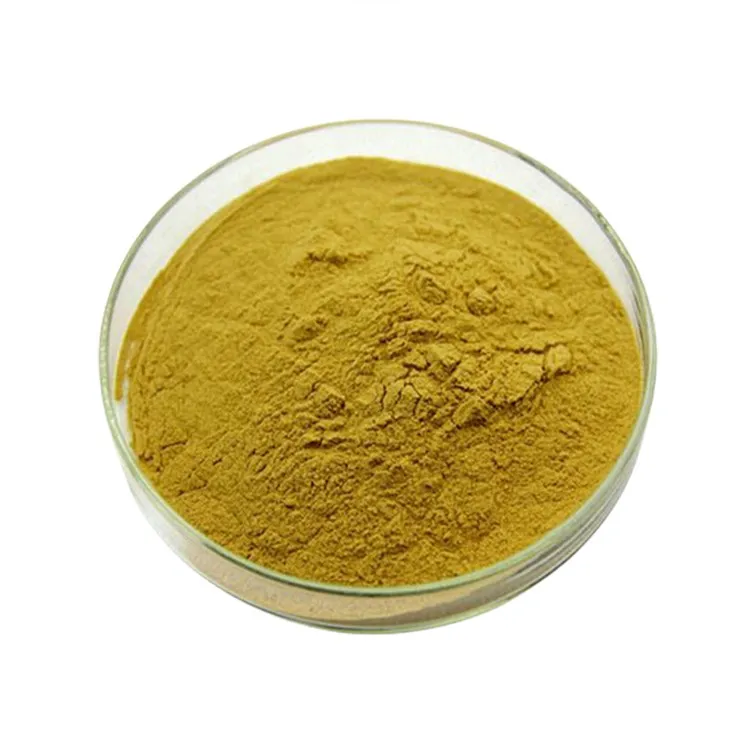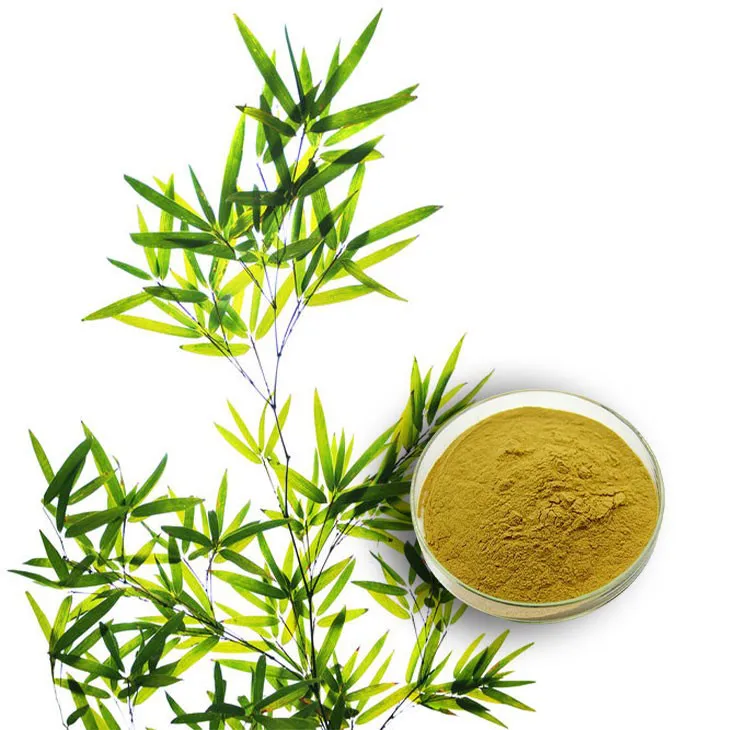- 0086-571-85302990
- sales@greenskybio.com
Bamboo Leaf Extract: From Leaves to Extraction.
2024-11-14

1. Introduction
Bamboo, a ubiquitous plant in many parts of the world, has long been an important part of human life. Bamboo leaves, in particular, have emerged as a valuable source of bioactive compounds. Bamboo Leaf extract has attracted substantial interest in diverse industries, including pharmaceuticals, food, and cosmetics. The process of obtaining this extract from the leaves is a complex and multi - step procedure that warrants detailed exploration.

2. Bamboo Leaves: A Rich Source
2.1 Composition of Bamboo Leaves
Bamboo leaves are replete with a wide array of bioactive substances. Flavonoids, for example, are one of the major groups of compounds present. These flavonoids play important roles in antioxidant activities, which can help combat oxidative stress in the body. Another group of compounds are phenolic acids, which also contribute to the antioxidant properties of bamboo leaves. Additionally, polysaccharides are found in bamboo leaves. These polysaccharides have been associated with various biological functions, such as immunomodulatory effects.2.2 Selection of Bamboo Leaves
The process of obtaining high - quality Bamboo Leaf extract begins with the careful selection of bamboo leaves. Not all bamboo leaves are suitable for extraction. Factors such as the species of bamboo, the growth environment, and the time of harvest all play crucial roles. For instance, leaves from certain bamboo species may have a higher concentration of the desired bioactive compounds. Bamboo grown in clean, unpolluted environments is likely to produce leaves with better quality in terms of bioactive content. Moreover, the time of harvest can significantly affect the composition of the leaves. Leaves harvested at the optimal time are more likely to contain higher levels of the valuable components.
3. Extraction Techniques
3.1 Solvent Extraction
One of the most commonly used methods for extracting bioactive compounds from bamboo leaves is solvent extraction. This method involves the use of a suitable solvent to dissolve the desired compounds from the leaves. Different solvents can be used depending on the nature of the compounds to be extracted. For example, ethanol is often a popular choice for extracting flavonoids. The process typically involves soaking the bamboo leaves in the solvent for a certain period of time, followed by filtration to separate the extract from the solid leaf material. This method is relatively simple and cost - effective, but it may have limitations in terms of selectivity and the purity of the extract obtained.3.2 Supercritical Fluid Extraction
Supercritical fluid extraction (SFE) is a more advanced technique. In this method, a supercritical fluid, usually carbon dioxide, is used as the extracting agent. Supercritical carbon dioxide has unique properties that make it an excellent solvent for extracting bioactive compounds. It has a high diffusivity and low viscosity, which allows it to penetrate the plant material easily and extract the compounds efficiently. Moreover, it can be easily removed from the extract by simply reducing the pressure, leaving behind a relatively pure extract. However, this method requires more sophisticated equipment and is generally more expensive than solvent extraction.3.3 Microwave - Assisted Extraction
Microwave - assisted extraction (MAE) is another innovative extraction technique. In MAE, microwave energy is applied to the bamboo leaves in the presence of a solvent. The microwave energy heats the solvent and the plant material rapidly, which enhances the extraction efficiency. This method can significantly reduce the extraction time compared to traditional solvent extraction methods. It also has the potential to improve the yield of the desired compounds. However, careful control of the microwave power and extraction time is required to avoid degradation of the bioactive compounds.
4. Isolation of Valuable Components
4.1 Flavonoid Isolation
After the extraction process, the next step is often the isolation of specific valuable components, such as flavonoids. There are several methods for isolating flavonoids from the crude extract. One common method is chromatography. Chromatographic techniques, such as high - performance liquid chromatography (HPLC), can be used to separate flavonoids based on their different chemical properties. This allows for the purification of individual flavonoid compounds or groups of related flavonoids. Another method is precipitation, where certain reagents are added to the extract to cause the flavonoids to precipitate out of the solution.4.2 Phenolic Acid Isolation
Similar to flavonoid isolation, phenolic acids can also be isolated from the Bamboo Leaf extract. Ion - exchange chromatography is one technique that can be used for this purpose. This method takes advantage of the different ionic properties of phenolic acids to separate them from other components in the extract. Another approach is solvent partitioning, where the extract is partitioned between two immiscible solvents based on the solubility differences of phenolic acids in different solvents.4.3 Polysaccharide Isolation
Isolating polysaccharides from bamboo leaf extract is a bit more challenging due to their complex nature. One method is enzymatic hydrolysis, where specific enzymes are used to break down the complex polysaccharide structures into smaller, more manageable fragments. These fragments can then be further purified using techniques such as dialysis to remove small - molecular - weight impurities. Another approach is ultrafiltration, which uses membranes with different pore sizes to separate polysaccharides based on their molecular weights.
5. Potential Applications
5.1 Pharmaceutical Applications
The bioactive components isolated from bamboo leaf extract have significant potential in the pharmaceutical industry. Flavonoids, with their antioxidant and anti - inflammatory properties, could be used in the development of drugs for treating various diseases related to oxidative stress and inflammation, such as cardiovascular diseases and arthritis. Phenolic acids may also have antimicrobial and antiviral properties, which could be explored for the development of new antimicrobial and antiviral agents. Polysaccharides, with their immunomodulatory effects, might be useful in the development of vaccines or immunotherapies.5.2 Food Applications
In the food industry, bamboo leaf extract can be used as a natural preservative due to the antioxidant properties of its components. It can also be added to functional foods as a source of bioactive compounds. For example, flavonoids can add nutritional value and health - promoting properties to foods such as beverages and snacks. Moreover, polysaccharides can be used as thickening or gelling agents in food products.5.3 Cosmetic Applications
Bamboo leaf extract has great potential in the cosmetic industry. Flavonoids and phenolic acids, with their antioxidant properties, can be used in anti - aging products to protect the skin from oxidative damage. They can also be incorporated into skin - whitening products as they may have the ability to inhibit melanin production. Polysaccharides can be used in skin - care products as moisturizers due to their ability to retain water.6. Conclusion
The journey from bamboo leaves to extraction is a complex yet fascinating one. The careful selection of bamboo leaves, followed by advanced extraction techniques and the isolation of valuable components, paves the way for the diverse applications of bamboo leaf extract in various industries. Understanding this process is essential for maximizing the utilization of this natural resource and for exploring its full potential in improving human health and well - being.
FAQ:
What are the main bioactive compounds in bamboo leaf extract?
The main bioactive compounds in bamboo leaf extract are flavonoids, phenolic acids, and polysaccharides. These compounds contribute to the potential applications of bamboo leaf extract in different industries.
Why is the selection of bamboo leaves important in the extraction process?
The selection of bamboo leaves is crucial because only carefully selected leaves can ensure the quality and quantity of bioactive compounds in the final extract. High - quality leaves are more likely to contain a rich amount of valuable components such as flavonoids, phenolic acids, and polysaccharides.
What are the advanced extraction techniques used for bamboo leaf extract?
Some of the advanced extraction techniques used for bamboo leaf extract include solvent extraction, microwave - assisted extraction, and supercritical fluid extraction. These techniques are designed to efficiently isolate the valuable components from the bamboo leaves.
What are the potential applications of bamboo leaf extract in the pharmaceutical industry?
In the pharmaceutical industry, bamboo leaf extract has potential applications due to its bioactive compounds. For example, flavonoids may have antioxidant, anti - inflammatory, and antimicrobial properties, which could be used in the development of new drugs or as supplementary ingredients in existing medications.
How can the utilization of bamboo leaf extract be maximized?
To maximize the utilization of bamboo leaf extract, it is essential to have a comprehensive understanding of the extraction process from bamboo leaves. This includes proper selection of leaves, using advanced extraction techniques, and exploring more potential applications in various industries.
Related literature
- Bamboo Leaf Extract: Chemical Composition and Biological Activities"
- "Extraction and Characterization of Bioactive Compounds from Bamboo Leaves"
- "Potential Applications of Bamboo Leaf Extract in the Food and Cosmetic Industries"
- ▶ Hesperidin
- ▶ citrus bioflavonoids
- ▶ plant extract
- ▶ lycopene
- ▶ Diosmin
- ▶ Grape seed extract
- ▶ Sea buckthorn Juice Powder
- ▶ Beetroot powder
- ▶ Hops Extract
- ▶ Artichoke Extract
- ▶ Reishi mushroom extract
- ▶ Astaxanthin
- ▶ Green Tea Extract
- ▶ Curcumin Extract
- ▶ Horse Chestnut Extract
- ▶ Other Problems
- ▶ Boswellia Serrata Extract
- ▶ Resveratrol Extract
- ▶ Marigold Extract
- ▶ Grape Leaf Extract
- ▶ blog3
-
High purity olive leaf extract
2024-11-14
-
Lavender oil extraction method
2024-11-14
-
100% organic virgin sea buckthorn fruit oil
2024-11-14
-
Lotus leaf extract powder factory in China
2024-11-14
-
China aged garlic extract supplier
2024-11-14
-
Deer antler extract powder manufacturer
2024-11-14
-
Saw palmetto extract vs whole herb
2024-11-14
-
Thunder God Vine Extract
2024-11-14
-
Curcumin Extract
2024-11-14
-
Chia Seed Powder
2024-11-14
-
Lycopene
2024-11-14
-
Sophora Flavescens Root Extract
2024-11-14
-
Hawthorn powder
2024-11-14
-
Passionflower Extract
2024-11-14
-
Hericium erinaceus extract powder
2024-11-14
-
Coconut Water Powder
2024-11-14
-
Coix Seed Extract
2024-11-14





















